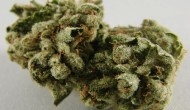Derealization & Depersonalization: Peculiar Bits of Business

The most troubling phenomena my panic and anxiety readers and clients report are the dissociative states, derealization and depersonalization (DD). I’ve written two Internet articles on DD; however, I wanted to share some fresh thoughts. Please understand my deep frustration in not being able to offer the solutions for which you may be looking. Unlike so many “authorities” that offer “miracle cures,” I simply won’t lie to you. But ongoing study and discussion of DD serves to increase awareness, which will ultimately lead to concrete relief alternatives.
DD are peculiar bits of business. I mean, they’re the source of terror and desperation for those who didn’t invite them to the dance, yet to a recreational drug user or one who enjoys altered perceptual states they’re honored guests. Let me share a funny story. It was 1972 and I was a freshman at Michigan State. Well, one night the floating party rolled around to our dorm room and the joints began to circulate. I was a marijuana-virgin, but against my better judgment I gave it a go. In very short order I found myself in a dissociative state, running up to my older brother’s fifth floor room to tell him what happened, hoping to find a measure of relief for my horror. He offered absolutely no comfort, as he tore out of the room in a mad dash for what he was sure would be some killer weed. By the way, what I had experienced wasn’t foreign, as I began having bouts of derealization at age nine.
Possible Causes
Given that DD are the third most common psychiatric presentation, trumped only by anxiety and depression, a look-see into its generation is always worthwhile and interesting. Now, before we get started I want to point out that DD can present whenever there’s a blockage of the pathway connecting perception and emotion. And the most common road blocks are a manifestation of a genetic predisposition, brain injury caused be internal or external factors, and emotional trauma and disorders. I’m going to list some common triggers of DD, but before I do you have to promise you won’t obsess over the possibility of being a sufferer of anything on my list (unless, of course, you are). Okay, let’s start with childhood emotional trauma, acute and chronic stress, Alzheimer’s, multiple sclerosis (MS), amyotrophic lateral sclerosis (ALS), stroke, brain tumors, and traumatic brain injury (TBI). And then there’s the legal and illegal substances merry-go-round, most commonly the use and abuse of marijuana, alcohol, caffeine, as well as recreational and prescription drugs. I’ll also add to the list the prolonged use of benzodiazepines (Xanax, Ativan, Valium, Klonopin, etc.). Heck, even the use of minocycline, a tetracycline antibiotic often used for the treatment of acne and lyme disease, can lead to DD. And go figure, in an almost cruel bit of turnabout, DD are classic withdrawal symptoms. Seems they present in the midst of a substance issue and on the way out the door.
Recent research has brought to light the potential involvement of cortisol in the generation of DD. Cortisol, the “stress hormone,” is produced in the adrenal glands. It’s best known for ramping-up our physical response to phenomena such as life stressors, trauma, excessive exercise, anxiety, and depression by passing word to the neurotransmitter and hormone norepinephrine (noradrenaline) to flip the switch on our sympathetic nervous system, our fight/flight headquarters. And, boom, off to the races we go. Obviously, situational secretion of cortisol is natural and necessary; however, when it’s secreted in the presence of chronic stress all sorts of icky physical consequences may occur, as well as generalized anxiety and panic. And DD. The bottom-line is the researchers used a measurement instrument known as the “Dissociative Experiences Scale.” And the subjects that tested high on the DD subscale had a much higher cortisol response to stimuli. So if the connection between stress, anxiety, and DD weren’t already obvious to you, the research bangs the point home.
Anyone who’s suffered from DD knows they can present in so many ways. Well, research is discovering that these variations can be traced to alterations in brain functioning. For example, the sensation of emotional detachment has been linked to lower levels of neural (having to do with neurons) response in the areas of the brain responsible for emotional feeling. And an increase in neural response was noted in the areas of the brain responsible for emotional regulation. For your reference and research purposes, key brain anatomy involved in emotion include the amygdala, anterior cingulate cortex, orbital prefrontal cortex, and the orbitofrontal cortex. What’s interesting here is the connection between emotion (amygdala) and thought (anterior cingulate, orbital prefrontal, and orbitofrontal cortices), this having much to do with the pathway between perception and emotion I mentioned earlier. As long as we’re discussing neurobiology, I’ll also point out that research is showing that issues with glucose metabolism causes abnormal functioning of the visual, auditory, and somatosensory cortices. Well, given the fact that these areas process incoming stimuli, and our response, is it surprising that altered functioning may lead to DD?
Treatment Alternatives
Naturally, treatment selection for DD is driven by cause. I mean, if DD are presenting as a result of a stroke, the obvious treatment focus is going to be upon the aftermath of the brain accident. However, if the cause of DD is, say, childhood emotional trauma, psychotherapy is indicated. By the way, the insight-oriented and cognitive behavioral therapies, as well as hypnosis, have been successful in the management of DD. And there are any number of strategies and techniques, such as mindfulness, that you can implement on your own.
Now, on the medical side of the fence, scientists at one time found hope in naloxone (Narcan) for the treatment of depersonalization. Naloxone, an opioid receptor blocker, is typically used to treat opioid (drug category that includes heroin, morphine, oxycodone, etc.) overdoses, specifically addressing central nervous system and breathing complications. Well, naloxone very positively impacted depersonalization in the lab, though a cousin medication, naltrexone (Revia), didn’t produce the same outcomes. It seems the success of naloxone involved the role of what’s known as an endogenous opioid system in the generation of depersonalization. Giving this subject due consideration would take pages; so for now just know that it all has to do with the existence of opioid compounds (endorphins are one of these) throughout our central and peripheral nervous systems, which play a big role in regulating our responses to stress, including the management of cortisol. Also managed is the blunting of the distressing and emotional component of pain. Complicated stuff. Well, the naloxone mission was ultimately abandoned for a number of reasons, including the fact that it can only be administered intravenously.
Though not as yet FDA approved for the treatment of DD, Transcranial Magnetic Stimulation (TMS) has shown some promise for relief. TMS, first developed in 1985, is a, well, gentle massage therapy for the brain. And it’s given by short magnetic pulses, which come from an electromagnet placed on the scalp. The massage is actually limited to the cerebral cortex, which is the approximately one-tenth of an inch outer surface of the brain. Cool thing is the impact of TMS treatment has some staying power after its administration. TMS has been getting much more attention since the mid-1990’s. Perhaps more to come.
Okay, let’s wrap it up by talking meds. No doubt they’ve helped millions of DD sufferers, but I’ll guarantee you that physicians and scientists don’t really know the “hows and whys.” At any rate, some of the meds that have provided assistance are the benzodiazepines lorazepam (Ativan), clorazepate (Tranxene), and alprazolam (Xanax). Then there are the tricyclic antidepressants amitriptyline (Elavil), doxepin (Sinequan), and desipramine (Norpramin). Of course, the SSRI’s fluoxetine (Prozac), sertraline (Zoloft), and paroxetine (Paxil) made the cut. But, then again, they always do. The anticonvulsant/mood stabilizer, lamotrigine (Lamictal), used to get a lot of press with regard to DD relief; however, its stature has fallen a bit. Finally, there are the atypical antipsychotics such as aripiprazole (Abilify), quetiapine (Seroquel), and risperidone (Risperdal). Give the use of meds in combating DD a lot of thought, and ask very specific questions of your psychiatrist should you choose to pursue them.
So there you have it, some random thoughts regarding DD. As I implied from the get-go, I feel so badly that I can’t bring you a cure; however, I sincerely believe the more we examine and discuss DD, the more likely concrete relief solutions will come to the fore.
After a life-long bout with panic disorder – and recovery – and a career in the business world, Bill found his life’s passion, his life’s work. So he earned his master’s degree and counseling credentials, and he’s now doing all he can to lend a hand to those having a tough time.
Bill authored a panic disorder education and recovery eworkbook entitled, “Panic! …and Poetic Justice,” which is available on his website and online store for immediate download. Also available is information regarding a collection of poems he wrote along his panic disorder and recovery journey entitled, “The Poetry of My Life.” Lots of good stuff to see, and more to come.
In addition to doing psychiatric emergency work, Bill continues to do a lot of writing. He’s conducted numerous mental health workshops for non-profit organizations and remains available to offer more. Bill is a national and local member of the National Alliance on Mental Illness (N.A.M.I.).












